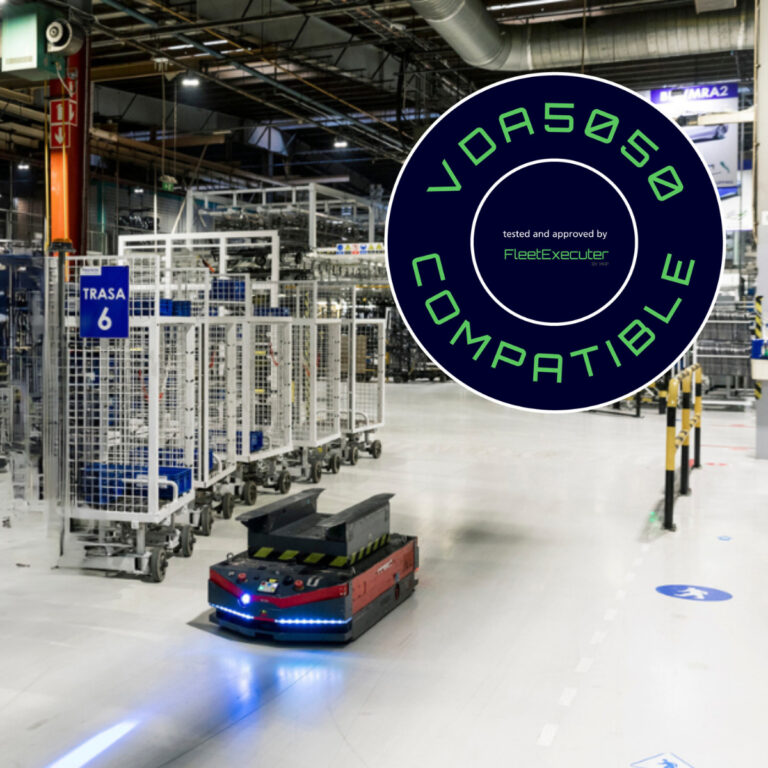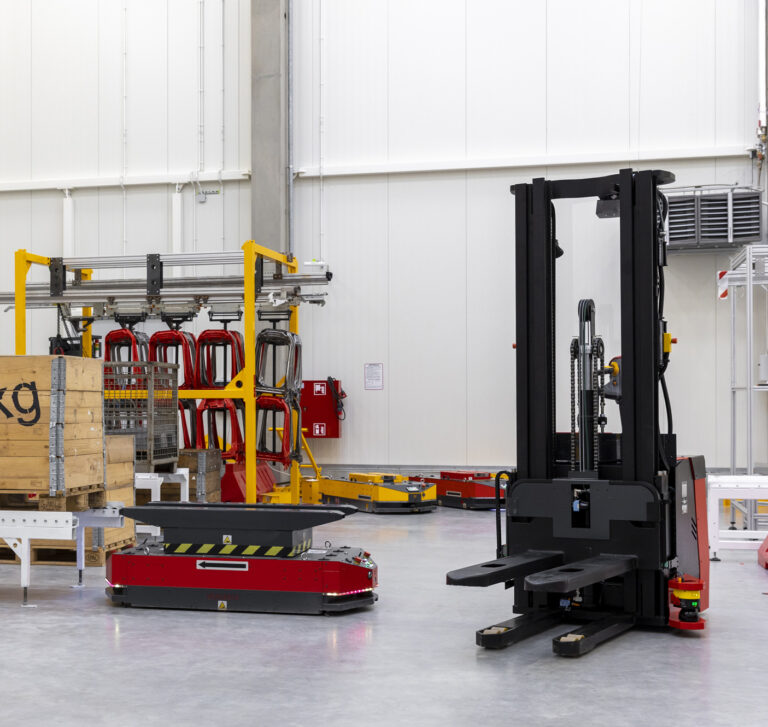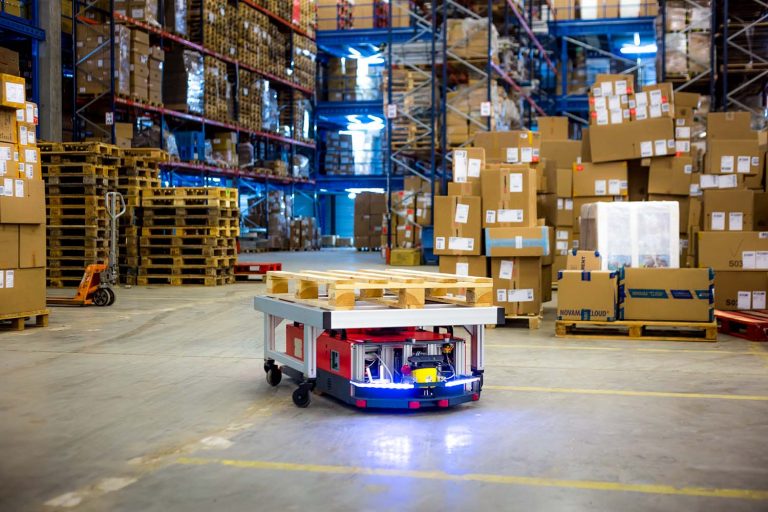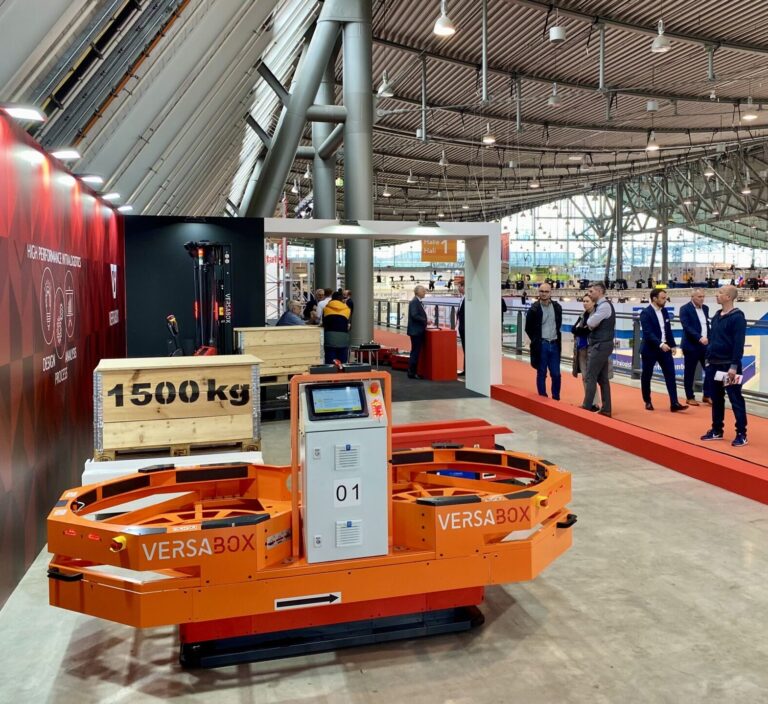This post is also available in:
![]() PL
PL
At first glance, after watching demonstration videos, you might think that an autonomous vacuum cleaner and an industrial Autonomous Mobile Robot (AMR) are very similar to each other, siblings of sorts. As is often the case, one succeeded and now dances on its brush on marble floors and Persian carpets, while the other was less fortunate and transports loads in warehouses and factory halls. The two are indeed as similar as a tipper truck toy and a 797B Caterpillar truck.
What makes it so easy to compare uncomparable things? The disproportion in the strength and suggestiveness of advertising campaigns of autonomous vacuum cleaners and AMRs is not insignificant. Promotion of the latter is directed at specialists, and this means it often falls on deaf ears – it tells experts what they already know, and it also doesn’t use the language of value-based selling that decision-makers are used to. Most likely it isn’t always the case, but it’s not difficult to imagine a situation where a demonstration of a warehouse-class AMR is summed up with “my vacuum cleaner can do it too”. A baseless but understandable opinion, since there are certainly some similarities, such as their function and appearance. The devil, as they say, is in the details.
Everything is the same, only completely different
The title of this paragraph defies logic, but it illustrates what happens when we compare “intelligent” vacuum cleaners to autonomous robots quite well. Let us have a closer look at a few selected skills of both devices – those which determine whether they can be called autonomous at all.
Independent execution of tasks
The AMR moves loads from point A to point B. The vacuum cleaner cleans flat surfaces (collects dust, food crumbs, hair, etc.). The similarity is evident – we define a task and indicate where it needs to be done, and the robots perform the functions they were designed for. However, while the AMR can identify a static or a mobile obstacle, independently decide whether it’s better to turn around and choose a different path (because the obstacle looks permanent), or let an incoming vehicle pass (e.g. a forklift) and continue on its route, an autonomous vacuum cleaner can do none of these things. A cleaning robot’s strategy for overcoming hurdles resembles a small dog constantly wagging its tail, sniffing every obstacle, and running circles around it.
Operating precision
The AMR is able to pick up, transport and deliver a load with such precision that it can be entrusted with the transport of electronics and fragile goods (e.g. glass), even if they’re very heavy. The vacuum cleaner collects and transports dust to the docking station in a container with a capacity of about half a litre. This function doesn’t require great precision. The situation is entirely different in the case of the AMR. If the robot made mistakes during pickup and delivery at the designated place, it could damage or even destroy the load and endanger the people working nearby. That’s why the AMR doesn’t make mistakes. In contrast, the precision of the vacuum cleaner can be summed up with: try until you succeed. If the crumbs can’t be collected on the first pass, they can be collected the second time round – nothing is lost, apart from battery life.
Navigation and detection of obstacles
Mapping is used by both autonomous vacuum cleaners and AMRs. Both devices are able to create electronic maps of the rooms they operate in. Changes in the arrangement of furniture or things left on the floor have to be identified and avoided without collisions, which in the case of the vacuum cleaner actually means constant collisions with obstacles. The AMR cannot afford to recognise obstacles by hitting them with its casing for obvious reasons. The robot identifies possible barriers well in advance, which allows it to slow down and stop at a safe distance from an obstacle.
Long battery life
Autonomy is also based on the ability to ensure the necessary energy reserves for continuous operation. Both devices offer long runtimes. They monitor battery status and, if necessary, return to the charging station on their own. However, in the case of cleaning robots, a long runtime means a few dozen minutes to one, maybe two hours. AMRs, such as VERSABOT 500 or VERSABOT 1000, can operate at full load for 8 hours on a single charge.
Flexibility of use
This isn’t a condition of autonomy, but the AMR can be adapted to perform various transport tasks. A vacuum cleaner is just a vacuum cleaner. An alternative use (which can be seen in user videos) could be cat transport. Animals like the vibrations of vacuum cleaners, and the heat emitted by the device is greatly valued in winter. The only requirement is a precise designation of the no-go zone containing the cat’s feeding area – otherwise the vacuum cleaner will suck up all the food and spill all the water.
So, what about autonomy?
A robot that deserves to be called autonomous should have the ability to move collision-free in a given environment (a room or several rooms) without direct operator intervention. Even at this minimum prerequisite of autonomy, it’s clear that autonomous vacuum cleaners have a big problem with it because they simply do not meet the collision-free requirement. Looking at how the vacuum cleaner handles this task brings to mind a drunken ballerina, who makes a lot of clumsy turns and bumps into everything in the room. For smaller objects, this can result in them sliding, overturning, or even suffering minor damage. Therefore, virtual lighthouses were created to allow you to create a virtual wall or mark areas excluded from cleaning on the vacuum’s virtual map.
To illustrate the “intelligence” and “autonomy” of household appliances, let’s try to imagine an AMR with the intelligence of a vacuum cleaner – it could end up being more dangerous than a bull in a china shop. Fortunately, this is only a hypothetical possibility.







